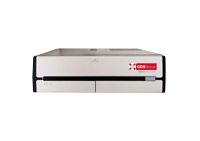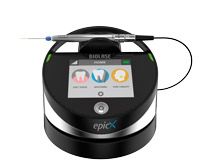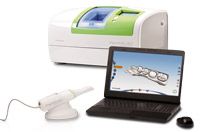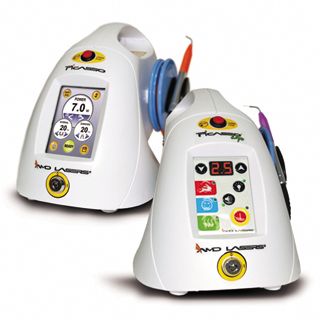The best dental products for your bucks
Money tends not to grow on trees, and given the current state of the economy – not to mention issues specific to the dental industry – buying new equipment is rarely a frivolous endeavor. Doctors have to weigh the pros and cons of their needs and wants against their available funds before making purchases – no matter the size.
There are products at different price levels that doctors should have in their practices, and there are also words of wisdom to guide judicious spending, not only for making smart equipment purchases but also for ensuring the practice engenders the growth it needs to be successful.
We spoke to dentists, consultants and suppliers, each with different perspectives on what doctors should invest their money in and how.
$500
For purchases up to $500, spending is small enough that it’s usually earmarked for supplies and items the doctor needs, but there are also useful-to-have items for the practice.
For example, doctors can benefit from monthly subscriptions to different professional services benefiting the practice.

“For $59 a month, a doctor can get CAESY Cloud,” says Jana Berghoff, technology marketing manager at Patterson Dental in St. Paul, Minn.
The CAESY system began as an $8,000 computer that delivered educational videos to workstations in the office. With the proliferation of cloud computing, that product evolved into a cloud-based service.
"They are one- to three-minute videos that explain to the patient what a treatment is going to be and why they need it,” Berghoff explains. “For $59 a month, they have access to over 300 different videos and animations to explain to their patients why they need different services and what the procedure is going to be like.”
Dr. John Flucke, DDS, technology editor for Dental Products Report, recommends investing in a Microlux flashlight from AdDent in Connecticut. The Microlux is a high intensity flashlight with interchangeable tips.
“It’s a really nice transilluminator,” Dr. Flucke says. “You basically shine it on the tooth. You put that flat tip against the surface of the tooth and it makes it look like it’s glowing. You can see all kinds of things, like cracks.”
The Microlux’s interchangeable tips include some with mirrors and perioprobes, as well as tips that help find tooth roots.
Dave Steck, vice president and general manager of Henry Schein, recommends electric handpieces.
“Those have been on the market for years, and they keep getting better and cheaper – which is good,” Steck says. “Electric handpieces allow doctors to do a variety of procedures that they can do in the office. A third of the dental offices have electrical handpieces. Two thirds do not, but the ones that don’t, once they get them, they tend to be very pleased with them.”
Looking at overall improvements to the practice, Dr. Roger Levin, DDS, CEO and chairman of the Levin Group, a dental practice consulting firm in Owings Mills, Md., recommends using those dollars for educational opportunities.
“I would recommend either taking a course, focused on increasing practice production, or buying a series of books,” Dr. Levin notes. “It’s best to buy dental-specific books. General business books are helpful, but they don’t help the dental practice very much.”
$1,000
Around $1,000, Dr. Flucke recommends the VALO, a curing light from Ultradent Products.

“It is very bright and very efficient, so it saves you a lot of time,” Dr. Flucke says. “It’ll set white filling material in five seconds. The VALO has multiple LEDs in it that produce different wavelengths of light, so it will set every white filling material on the market.”
Another benefit of the VALO, notes Dr. Flucke, is its durability.
“In dentistry, despite our best efforts, we drop things,” he says. “I’ve knocked two different things on the floor this week. So when you buy something, you buy it in the back of the mind knowing that thing will hit the floor eventually. There are different types of aluminum, and the VALO is made out of the best aluminum out there – it’s made out of aerospace-grade aluminum, and you can literally drop this thing up to 300 times before it breaks.”
On the practice management side, Dr. Levin recommends spending $1,000 on staff training.
"Today, any worker in America who is not retrained every few years becomes obsolete in the job, and as the industry changes, we have to work very hard to keep your staff current and up-to-date,” Dr. Levin says. “The doctor can learn whatever the doctor wants to learn but will have trouble implementing that information into the practice without a well-trained staff.”
$5,000

No one likes to think tragedy could strike, but if it does, a product like DDS Rescue is invaluable. Costing around $2,000 (depending on its configuration) and a monthly subscription fee, DDS Rescue can help keep your practice safe from catastrophe or theft.
“Dental offices have all this data on their patients,” Berghoff says. “They’re required to keep it secure and protected. But what many dental offices do is back up that data on an external hard drive and take it home in their car or leave it in the office. That’s putting patient data at risk.”
Whether kept in the office or transported to an off-site location, that physical backup is still susceptible to theft or damage. DDS Rescue is both a physical and a virtual solution to information backups.
"It sends that data up into the cloud, so if is wiped out completely, the doctor can go online and view their patient information, ensuring continuity of service to those patients,” Berghoff says.
DDS Rescue isn’t the sexiest purchase for the dental practice, but if it’s needed even once, doctors will likely be grateful they made the investment.
"This isn’t something that is necessarily going to give you an immediate return on investment in your practice,” Berghoff adds. “It’s not something that’s necessarily the fun thing to buy. It’s not a new toy that you get to play with; it’s not something that’s going to bring additional revenue into your practice. But for those doctors who have gone through catastrophe or a hardware malfunction, they would pay any amount of dollars to get that information back. This is an unbelievably important thing that absolutely every doctor needs to have.”
Steck recommends a diagnostic intraoral camera.
“Not only do they work as intraoral cameras that you can show a picture to the patient,” Steck says, “they also are good at finding dentistry, almost like an X-ray. So if you don’t want to take an X-ray – some people don’t like radiation – you can use that, and it’ll give you maybe not as good a picture as an X-ray but good enough so that you can actually find dentistry. So, it will show you that too in a different kind of view and actually show you decay. It’s not as good as an X-ray but it is a good in-between step, and, in many cases, it works really well, and they pay for themselves if the doctor uses them a lot.”
Dr. Flucke endorses a caries detection system, though a specific make and model is really dependent on the doctor’s needs.
“They all work well,” Dr. Flucke observes. “They all have their pluses and their minuses. It just depends on what bells and whistles you want.”
On the practice management side, Dr. Levin advises having a comprehensive practice analysis performed by a certified practice analyst.
“The practice analysis is a detailed review of the current state of the practice,” Dr. Levin says. “Too many dentists start making changes before they really understand the current state of the practice. Many dentists never think about analyzing their situation, but if you think about it, if you go to a physician, they’re going to diagnose you first. If you go to a personal fitness trainer, they’re going to analyze your current physical condition. If you go to a cardiologist, they’re going to check your heart before they do anything, and we run our practices day after day without really diagnosing our current situation.”
$10,000
With $10,000, Dr. Levin recommends bolstering the practice’s online presence. Since the Internet is so omnipresent, it is important the practice be well represented online. And if the doctor is going to spend that amount of money on online presence, he or she should make sure the money is spent wisely.
“So many dentists are really buying a bill of goods from people who tell them going to do all these things, and they really don’t,” Dr. Levin says. “So many practices are just not even in the digital world at all. Patients can’t find them; they don’t come up well in search engines; they’re not managing the reputation on the directories.”

For $10,000, Dr. Flucke recommends a diode laser, which allows cutting in a bloodless environment.
“With a laser, I can go in and just basically make a cut and get the same results that you would with the blade, but it coagulates as it cuts, and I’m still going to get the drainage like I wanted,” Dr. Flucke says. “Post-operatively it will not hurt.”
$25,000
For $25,000, Dr. Levin recommends getting comprehensive practice consulting.
"You can get consulting cheaper by getting a one- or two-day consultation, which I don’t find to be the best approach, and that’s why I use the word ‘comprehensive,’” Dr. Levin says. “For $25,000, you can hire a consulting firm that will transform the practice. They should still start with an analysis, but they can transform the practice into what we call a ‘real-world business.’ In the business world, businesses must copy the best models out there. There’s a reason why smaller fast food chains copy Wendy’s, Burger King and McDonald’s. It’s called ‘industry standards.’ In dentistry, we don’t do that.”
In terms of hardware, Dr. Flucke and Steck both recommend a digital impression system.
“At Schein, we believe that is the hottest category, and it will be for the next five or six years,” Steck says. “For years, dentists have used impression materials. They don’t really need to do that anymore. The digital scanners are actually more accurate than the impression materials now. They obviously allow you to send a digital file to your lab.”
Utilizing a digital impression system is far more convenient than sending off a physical impression to the lab.
“You don’t have to pour it up as a model and send it out, which is a very labor-intensive, archaic process,” Steck says. “But until the last two or three years, the quality of the digital impression scanning was not nearly as good, and it’s made a quantum leap.”
Steck expects there to be more digital impression scanners on the market this spring.
“We think there are going to be 10 or 15 new scanners on the market in March,” he says. “It’s an exciting part of the business that we feel should be the first thing to buy.
$50,000
In tandem with digital impression systems are milling units, which come in around the $50,000 mark.

"The other nice thing about the digital impression systems is that they allow the doctor to take these images and use their own CAD/CAM milling system to create the crown in the dental office while the patient waits,” Dr. Flucke says. “Companies are creating milling units that interface with these digital impression systems, and it is allowing the doctor to come in and do this whole CAD/CAM thing and create crowns in-house using digital impression systems that they purchased thinking, ‘Oh, I just won’t have to use impression material anymore,’ and some doctors are seeing the benefit a milling unit that will interface with this, so I can have this whole in-house system that I didn’t even realize existed before.”
Dr. Levin advises adding an extra treatment room to the practice.
“First, if you put in an extra treatment room and you manage and market your practice properly, you’re going to grow, and you’re going to need the space,” Dr. Levin says. “Second, it creates terrific scheduling flexibility. So many practices are jammed up because they have to see higher volumes due to the decrease in insurance reimbursements so that an extra room takes a huge amount of stress off the practice. Third, if the practice does grow successfully, it will want to have an associate at some point, and this helps add room to bring the associate into the practice.”
Education
It can’t be disputed that additional education and skills help the doctor expand his or her offerings, making for a more successful practice. Education can be another wise investment opportunity.
Dr. Attila Nagy, DDS, of Bucyrus, Ohio, gained additional education via a master’s degree and training through Progressive Orthodontic Seminars and the McGann Postgraduate School of Dentistry, adding orthodonture to his family practice. During the course of three years, he spent about $120,000 on education and equipment. The investment, he says, was quickly recouped. But for Dr. Nagy, money hasn’t been the most important part of his continuing education – there are intangibles that have come with the new work.
“The biggest thing in adding orthodontics to a general dental practice is that it is a more positive experience,” Dr. Nagy says. “It’s one of the few things that patients actually want from a dentist. Patients don’t really want a filling, but they have to have it, and cleanings – very few patients want to have cleanings. I think that braces are the most life-changing. I don’t think the money part is the most important. Yes, it brings in income to the dental practice, but the biggest thing is that it’s a lot more rewarding. It makes a practice a lot more positive and that’s something that patients like.”
How to spend your money
There are thousands of products at any price point a doctor can purchase, but it’s important for a doctor to know what he or she should spend money on and when to keep that wallet in its holster.
“We have something we call the ‘coat rack syndrome,’” says Amy Morgan, CEO of the Pride Institute, a practice management consulting firm in San Francisco. “Even if the technology is the best of the best of the best, and it’s been stamped by Gordon Christensen, the Best of Class awards or whatever, we have seen so many expensive pieces of innovative technology serve only as coat racks. If you’re not doing it for the right reasons, there’s a good chance you’re not going to implement that effectively and not going to get a return on investment.”
Knowing your practice and its mission is critical in avoiding over-purchasing.

AMD Lasers provide clinicians with quality products designed to fit your budget.
“Most of these guys shoot from the hip, and they don’t have a clearly defined vision of what their practice is, what their practice offers, the target profile patient that they are offered to and a strategy on what their systems and their outcomes need to look like to achieve that vision,” Morgan says. “As a result, they very often go into some of the more expensive purchases looking for a silver bullet solution. For example, I notice my new patient flow is down, so I’m going to go and buy a cone beam scanner, which is a higher price point piece of equipment. The truth of the matter is that the cone beam scanner by itself will never compel a new patient to pick up the phone and call; however, how you’re utilizing the cone beam scanner, how you’re pricing the cone beam scanner, the fees around the scanner, how you’re marketing the cone beam scanner to referring practices and how your team utilizes that is that make/break point for success.”
Be careful about purchases. Knee-jerk reactions and spending without really thinking through what you need can cause expensive mistakes.
“Dentists are not necessarily looking at enhancing their practice and making additional purchases of technology,” Morgan says. “Very often they buy based on the tummy ache, and a running joke is 80 percent of the population of dentists usually walk through a convention floor with a sign on their back that says ‘Talk to me. I’ll buy anything that’s shiny and new,. And then they get cynical when they get older. They get the dead carcasses of the initiatives that they tried to make lying in their way. They tend to get cynical and shut down to the technology and purchases that they should be making. The higher a doctor goes on a new piece of equipment or a purchase, the more planning and investigating are involved.”
Invest wisely
“Eighty percent of doctors don’t take a salary,” Dr. Levin observes. “They just look in the checkbook to see what’s left. If you don’t take a salary of any sort, then you don’t have any kind of budget. So when they look in there and they see an extra $5,000, they’re focused on the most immediate thought: ‘Take this course,’ ‘take a vacation’ or ‘buy the newest gadget.’ A lot of the technologies are very helpful and important, but some of them don’t help grow the practice so it’s very important to have a plan for each year.”
Another factor to consider when making a purchase is what will the return on investment be.
“ROI isn’t just money. It can be increased efficiency, decreased stress, increased market profile,” Morgan notes. “It can even be an increased staff morale. But if you don’t define what your return-on-investment desire is, it makes it harder for you to decide what pieces of technology may support that. If my return on investment is that I want excellent clinical results with minimal redos or I want a more efficient way to be able to serve our patients’ restorative needs in the least amount of time, then you might be looking at CAD/CAM because it is known for reducing the amount of visits that need to be done.”
Ultimately, purchasing requires solid information and decision-making on the doctor’s part, which can be difficult in this day and age, Morgan observes.
It is important that dentists and their teams feel safe in their education,” she says. “We are so inundated by so many messages, whether it’s dental messages or the pop-up ads that come up on your email every day, that the consumer is becoming more and more cynical – not about the companies that are trying to sell them but by their own ability to make the appropriate decisions. What tends to happen is analysis paralysis: ‘I don’t trust my ability to make decisions, therefore I do nothing.’ Being in a safe environment to educate themselves how to approach technology and a safe environment where they can understand the merits of the technology without feeling like they’re being sold is an absolutely essential element for the dental profession to keep the lake moving forward.”

Take advantage of technology: Products like the ACTEON North America SoproCARE offer comprehensive oral exams in one device.
Spending must be done conscientiously and with consideration for the overall good of the practice.
“We really are in a new normal,” Dr. Levin says. “Dentistry is never going back to the way it was seven or eight years ago, and if we don’t invest in the business side of the practice, there’s a real danger of hitting a plateau and a decline in production.”
Ultimately, when buying new equipment, the doctor must consider how it will benefit his or her patients.
“When making a technology decision, I look at it from the point of view of my first and most important responsibility is to take care my patients,” Dr. Flucke says. “If I can make it fun and techy and ‘gee-whiz isn’t it wonderful,’ that’s great. But, at the end of the day, if it doesn’t benefit the patient, if I can’t look them in the eye and say, ‘This is good for you,’ I’m not going to do it.”
ACTIVA BioACTIVE Bulk Flow Marks Pulpdent’s First Major Product Release in 4 Years
December 12th 2024Next-generation bulk-fill dental restorative raises the standard of care for bulk-fill procedures by providing natural remineralization support, while also overcoming current bulk-fill limitations.